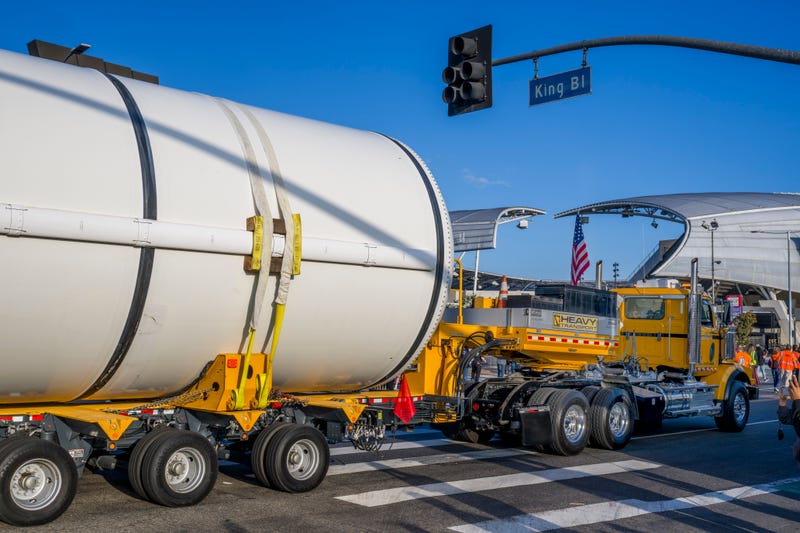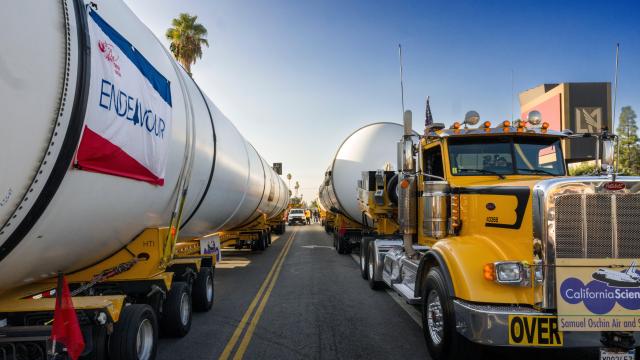Twin rocket boosters of the retired Space Shuttle have made the trek to Los Angeles, where they will be stacked in a launch-ready, vertical position for the first time in over a decade.
On Wednesday, the components of the Space Shuttle were transported from the Mojave Air and Space Port on board two massive trucks for the last leg of their journey to the California Science Center.
The solid rocket boosters (SRBs), along with the Endeavor orbiter, will be propped up for display at the future Samuel Oschin Air and Space Center, which is currently under construction, according to the California Science Center. Endeavor has been on display at the California Science Center for the past 11 years, albeit laying horizontally rather than standing straight as though it’s ready to launch once again. Once fully stacked together, the 20-story-tall vertical display will be the only “ready-for-launch” Space Shuttle system in the world in terms of its staging and appearance.

The two boosters journeyed north along Figueroa Street to Martin Luther King, Jr. Boulevard, accompanied by officials, philanthropists, and Science Center leadership, who walked alongside the relics until reaching the ceremonial “finish line’”at 39th Street.
“Exactly eleven years after Endeavour’s memorable crosstown journey, we’re delighted that the public has once again demonstrated such enthusiasm for this historic arrival,” Jeffrey Rudolph, President and CEO of the California Science Center, said in a statement. “The arrival of our [SRBs] propels us one step closer to the completion of the future Samuel Oschin Air and Space Center, which will serve as a launchpad for creativity and innovation and will inspire future generations of scientists, engineers, and explorers.”
Now, the California Science Center will begin a six month process labeled as “Go for Stack,” putting together the Endeavor orbiter, the two side boosters, as well as the Space Shuttle’s external tank, to create its final, vertical display. This will be the first time the vehicle is stacked vertically outside of a NASA facility, and it will be no easy feat.

The first part of the process involves installing the rocket’s aft skirts—a pair of skirt-shaped bottom segments that form the base of the solid rocket boosters. The solid rocket motors will be stacked on top of the aft skirts to form the solid rocket boosters. The Shuttle’s external tank, ET-94, will then be lifted into place, followed by the Endeavor orbiter, which will be lifted by a large crane and connected to the rest of the rocket stack.
The 15-story high reusable rocket motors served NASA’s Space Shuttle program, which ran from 1981 until 2011, producing more than 5 million pounds of thrust at liftoff, according to NASA. After burnout, the twin boosters descended back into the ocean, where they were recovered. Subsequently, they were refurbished and reused for the next launch.
